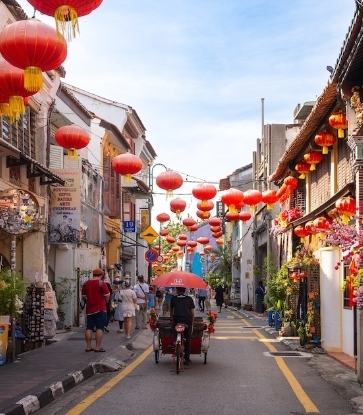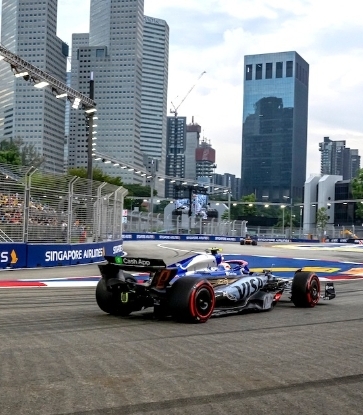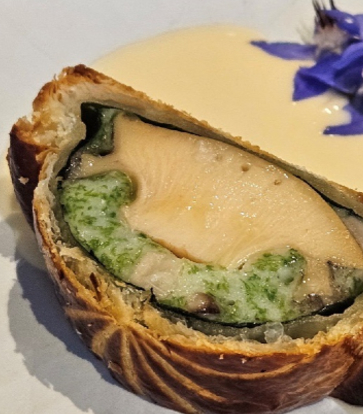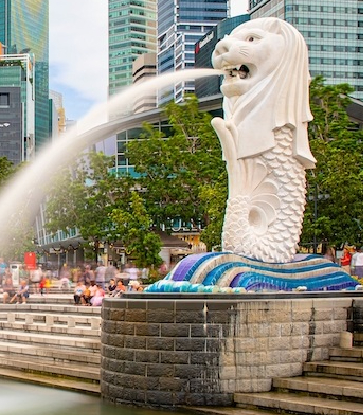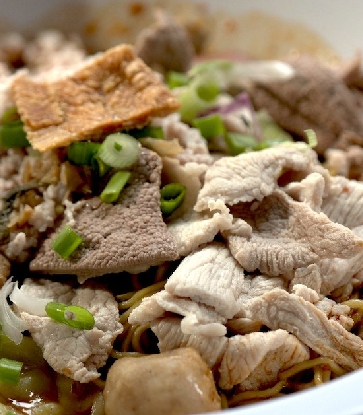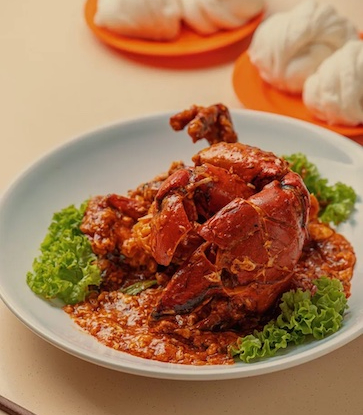Zi char is the quintessential “comfort meal” for many Singaporeans and Malaysians — a chance to relax over a freshly cooked meal at the end of the day, and in a casual atmosphere that doesn’t demand dressing up or formal dining etiquette.
Zi char (also spelt as tze char) comes from an amalgamation of two words: "Zi" = Cook and "Char" = Fry, both pertaining to the preparation of food for consumption. Zi char, or its equivalent, exists throughout the Asia-Pacific region, although by different names and with different origins: in Hong Kong, they are the dai pai dongs (the term means “big license stalls”), rustic street-side eateries serving what is regarded as soul food for generations of Hong Kongers. In Kuala Lumpur, with its mainly Cantonese clientele, they are called dai chow, Canto-speak for “big fry-up”, alluding to the big, heavy seasoned woks wielded by the chefs as they deftly blitzed and tossed the ingredients to produce flavoursome dishes with the requisite wok hei (“fragrance from the wok”). In Penang, zi char is pronounced choo char in Penang’s Zhangzhou-Hokkien parlance, in comparison to Singapore’s Quanzhou-Hokkien enunciation. In Taiwan, they are called rechao dian (“hot stir-fry place”) — also essentially referring to wok-charged dishes being dished out sizzling hot.
But call it what you may, zi char plays an essential role in keeping our working populations, and their families, happily fed.

Origins and Characteristics of Zi Char
Whilst present-day dai pai dongs in Hong Kong came into being post-World War II — when the authorities there issued licenses to street vendors for regulatory purposes, — Malaysian, Singaporean, and Taiwanese zi char purveyors have their roots much later: around the post-baby boomer era in the 1980s, when most women chose to work outside. Consequently, home-cooked meals were no longer an option for the working population at the end of a work day.
As people sought a more substantial meal after work, as compared to their sandwich or one-plate lunches, they looked for casual eateries that offered proper sit-down meals — preferably with rice and hot, freshly cooked dishes, but not in a not-too-formal restaurant environment. This is where the neighbourhood zi char eateries stepped in to fill the role.

Zi char dining places tend to be small, semi-al fresco neighbourhood eateries that eschew recipes that require time-consuming or elaborate preparations, in favour of quick stir-fries and straight-forward home-style cooking. A zi char stall is also run by someone who demonstrates an incredible mastery of his wok, churning out sizzling-hot stir-fries or braised dishes in quick succession. The clientele tend to be regulars who appreciate simple, good food, served promptly and amidst a casual, unpretentious ambience.

Regional Variations of Zi Char Dishes
Zi char dishes are usually Chinese-based, but do not preclude those adopted from other popular cuisines: Nyonya, Malay, Indian, or Thai. As zi char offerings eschew ethnic divides, it’s not unusual to see Cantonese roast meats and stir-fries next to grilled seafood smothered with sambal belacan, or a claypot with Indian fish-head curry. Zi char can also be quite localised, with each city in Malaysia or Singapore having specific dishes that are popular with its domestic clientele.

In Kuala Lumpur, where the cooking styles are influenced by its mainly Cantonese and Hakka Chinese populace, dishes are often made more robust with the inclusion of local condiments like sambal belachan (an ultra-spicy melange of chillies with fermented shrimp paste). Popular zi char dishes there include kam heong seafood (photo on the left) — spicy crabs or prawns with chillies, dried shrimps, curry powder, and curry leaves, or the Four Heavenly Kings (Chinese: 四大天王) — an assertive stir-fry of stink beans (petai), okra, wing-beans, and aubergine (brinjal), aggressively flavoured with spicy sambal belacan and dried shrimps.
RELATED: A Crash Course on Malaysia's National Condiment: Sambal
Penang boasts its own zi char favourites, like the claypot fish-head curry with okra and tomatoes — a nod to its Straits Chinese (Baba-Nyonya) heritage, and the Three-Cup Chicken or san bei ji (Chinese: 三杯鸡) — a tasty Taiwanese import of chicken in sesame oil, soy sauce, and rice wine. The majority of the Chinese in Penang share the same Fujianese heritage as their Taiwanese counterparts, and many dishes on both islands are somewhat reminiscent of each other.

Singapore’s zi char culture has also evolved from its humble beginnings, with some places offering wider choices, including pricier seafood options nowadays. But most zi char eateries are still to be found in the HDB (Housing & Development Board) heartlands, where they continue to feed generations of customers who return for their favourites: coffee-flavoured sticky pork ribs, batter-fried prawns coated in wasabi-mayo dressing, and seafood or meats in milky salted duck’s egg sauce.
The Future of Zi Char
Zi char food culture, by its very nature, frowns upon profligacy, and remains grounded on economy. Its offerings often reflect the freshest daily produce from the markets. In giving its customers what they want, a zi char eatery does not look at how much their customer can pay but, rather, how little they need to pay.
Zi char eateries have always been known for their promptness in responding to the latest dining trends, and to also give their customers what they want, but without having to pay an arm and a leg for it. Now that is the beauty of zi char.
Where to enjoy Zi Char in Kuala Lumpur & Penang:
Restoran Pik Wah (Bib Gourmand, MICHELIN Guide Kuala Lumpur & Penang 2024)
Sek Yuen (Bib Gourmand, MICHELIN Guide Kuala Lumpur & Penang 2024)
Teksen (Bib Gourmand, MICHELIN Guide Kuala Lumpur & Penang 2024)
Where to enjoy Zi Char in Singapore:
Kok Sen (Bib Gourmand, MICHELIN Guide Singapore 2024)
Sik Bao Sin (Desmond's Creation) (Bib Gourmand, MICHELIN Guide Singapore 2024)
Sin Huat Seafood Restaurant (Bib Gourmand, MICHELIN Guide Singapore 2024)
Keng Eng Kee (Bukit Merah) (Selected, MICHELIN Guide Singapore 2024)
Mellben Seafood (Ang Mo Kio) (Selected, MICHELIN Guide Singapore 2024)







